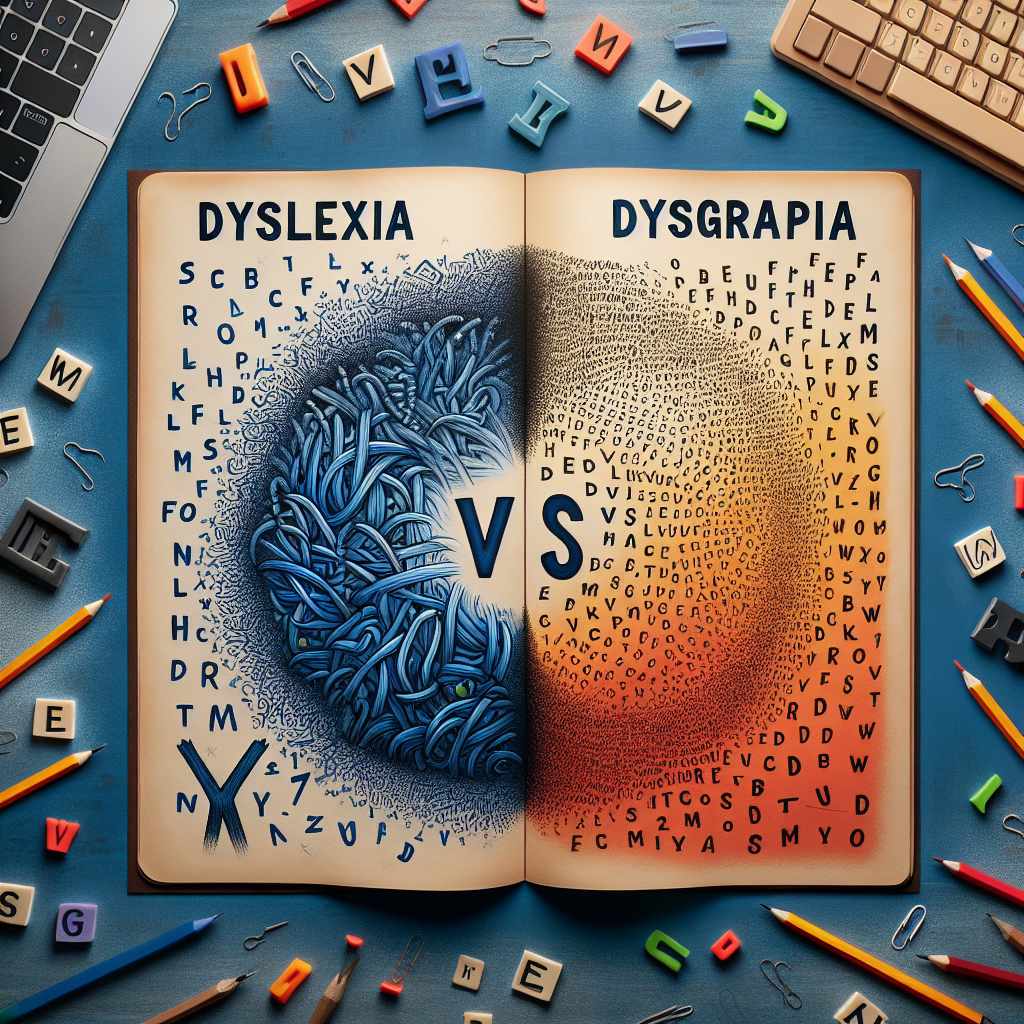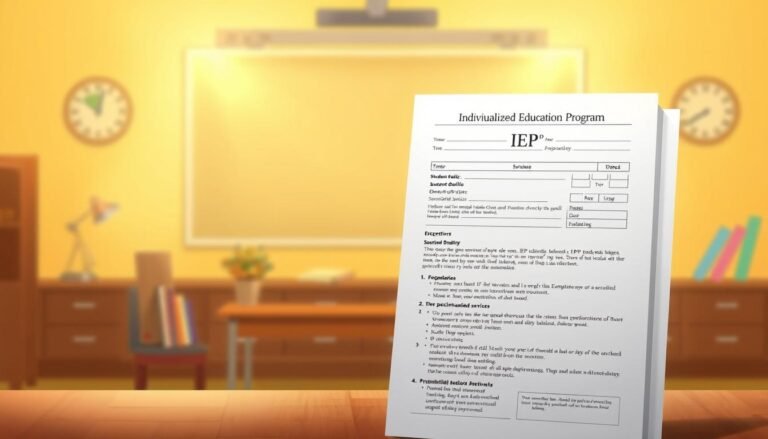
Dyslexia vs. Dysgraphia: The Ultimate Comprehensive Guide for Educators and Parents
Introduction
In today’s educational landscape, understanding learning differences is not just beneficial; it’s essential. Among these differences, dyslexia and dysgraphia stand out as two of the most commonly discussed conditions affecting reading and writing ability. For educators and parents alike, grasping the nuances between these two disorders can pave the way for more effective interventions and support for children who struggle. This article, Dyslexia vs. Dysgraphia: A Comprehensive Guide for Educators and Parents, will delve deep into both conditions, exploring their characteristics, impacts on learning, and strategies for support.
The journey begins with a clear understanding of what dyslexia and dysgraphia are. Let’s explore how these two conditions differ yet can occur together, and how recognizing these differences can contribute significantly to a child’s educational success.
Understanding Dyslexia and Dysgraphia
What is Dyslexia?
Dyslexia is a specific learning disability that primarily affects reading. Characterized by difficulties with accurate and/or fluent word recognition and by poor spelling and decoding abilities, dyslexia can significantly hinder a child’s academic performance. Approximately 5-10% of the population experiences dyslexia, making it one of the most common learning disabilities.
Key Characteristics of Dyslexia:
- Difficulty with phonological processing, which affects reading fluency and comprehension.
- Problems with spelling, often leading to inconsistent spelling patterns.
- Issues with decoding unfamiliar words, causing hesitation and frustration during reading tasks.
What is Dysgraphia?
Dysgraphia, on the other hand, is a specific learning disability that affects writing abilities. It can manifest in various ways, from issues with handwriting, spelling, and organizing thoughts on paper. Dysgraphia impacts the physical act of writing, as well as the cognitive processes involved in composing written text.
Key Characteristics of Dysgraphia:
- Poor handwriting that is often difficult to read.
- Trouble organizing thoughts into written format.
- Inconsistent spacing and sizing of letters.
Dyslexia vs. Dysgraphia: Key Differences
Understanding how dyslexia and dysgraphia differ is vital for educators and parents. Here are some of the primary distinctions:
| Feature | Dyslexia | Dysgraphia |
|---|---|---|
| Primary Impact | Reading | Writing |
| Key Symptoms | Poor phonological awareness, decoding issues | Poor handwriting, difficulty with spelling, organizing ideas |
| Cognitive Processes | Affected primarily by visual processing abilities | Affected by motor skills and spatial awareness |
| Assistive Strategies | Phonics-based instruction, accommodations for reading | Tools for typing, graphic organizers |
The Importance of Early Intervention
Identifying Signs Early
Early identification of dyslexia and dysgraphia can lead to timely interventions that drastically improve outcomes. Parents and educators should look for common signs. For instance, a child who struggles to read simple words or write clearly may need further assessment.
Case Study 1: Early Signs of Dyslexia
Scenario: Emma, a seven-year-old, loves storytelling but struggles to read aloud in class. Despite her enthusiasm, she frequently mixes up letter sounds and avoids reading tasks.
Analysis: Emma’s passion for storytelling suggests she understands narrative structure, indicating potential strengths in oral language. Targeted interventions that incorporate her storytelling abilities can be beneficial.
Teaching Strategies for Dyslexia and Dysgraphia
Differentiating Instruction
Knowing how to tailor teaching methods for kids with dyslexia and dysgraphia is crucial. Here’s a comprehensive overview of strategies that could benefit both sets of learners.
For Dyslexia:
- Multisensory Instruction: Engaging multiple senses can help reinforce learning. For example, using tactile letters can boost letter recognition.
- Phonemic Awareness Games: Playing games that emphasize sound patterns can make phonics instruction more enjoyable and effective.
For Dysgraphia:
- Keyboarding Skills: Teaching students to type instead of write can help ease the frustration associated with handwriting struggles.
- Graphic Organizers: These tools can assist students in organizing ideas before writing.
Case Study 2: Effective Strategies for Dysgraphia
Scenario: Noah is a nine-year-old who finds it challenging to write in a straight line and often mixes upper and lowercase letters.
Analysis: By introducing keyboarding skills and using graphic organizers, Noah can express his ideas without the physical hindrance of writing issues, allowing him to focus on content rather than mechanics.
The Emotional and Social Impact of Dyslexia and Dysgraphia
Building Self-Esteem
Both dyslexia and dysgraphia can affect a child’s self-esteem. Being aware of this emotional impact is crucial for parents and educators. Many children may feel frustrated or inadequate when they compare themselves to peers.
Case Study 3: Emotional Implications
Scenario: Lily, a ten-year-old with dyslexia, often refuses to participate in class discussions due to her reading anxiety.
Analysis: Addressing Lily’s emotional needs through a supportive classroom environment can foster self-esteem. Positive reinforcement and establishing a reading buddy system could significantly help.
Collaborating with Parents and Educators
Establishing Open Communication
Collaboration between parents and educators can significantly improve the support system for children facing learning differences. Regularly scheduled meetings can be an effective way to discuss progress and explore new strategies.
Actionable Tips for Collaboration:
- Regular Updates: Provide parents with ongoing updates regarding their child’s progress and setbacks.
- Shared Resources: Encourage sharing of resources, including books, articles, and strategies that can be implemented at home and in the classroom.
Conclusion
Understanding the distinctions and intersections of dyslexia and dysgraphia is essential for educators and parents looking to support children with learning differences. By recognizing the unique traits of each condition, implementing tailored strategies, and fostering an environment of compassion and understanding, we can create an educational experience where every child thrives.
In this Dyslexia vs. Dysgraphia: A Comprehensive Guide for Educators and Parents, we’ve explored the characteristics, impacts, and strategies that can facilitate a nurturing environment for children facing these challenges. Equip yourself with knowledge, stay proactive, and remember, early intervention is key!
FAQs
1. Can a child have both dyslexia and dysgraphia?
Yes, it is possible for a child to be diagnosed with both conditions. Many children with dyslexia also exhibit signs of dysgraphia, and vice versa.
2. What resources are available for parents?
There are numerous resources including online communities, local support groups, and educational websites that provide valuable information and support for parents dealing with dyslexia and dysgraphia.
3. How can teachers accommodate students with dyslexia?
Teachers can provide accommodations such as extended time on tests, the option to use text-to-speech software, and providing written instructions alongside oral directions.
4. Are there specific tools recommended for dysgraphic students?
Yes, tools like speech-to-text software, digital graphic organizers, and alternative writing utensils can help alleviate the writing struggles associated with dysgraphia.
5. What role does a diagnosis play in addressing these conditions?
A formal diagnosis can be an essential first step in acquiring tailored support and educational resources for the child, guiding both educators and parents in the intervention process.
6. How does dyslexia influence a child’s social interactions?
Children with dyslexia may face difficulties in social settings due to reading struggles, leading to feelings of isolation. Building a supportive social network can be crucial for their emotional well-being.
By equipping ourselves with this knowledge from our Dyslexia vs. Dysgraphia: A Comprehensive Guide for Educators and Parents, we can make a meaningful difference in the lives of children navigating these challenges.
















